About this course
Publishing can take many forms, from a hard-copy book publication to a website. Regardless of the method, the goal of publishing is to make your work accessible to the members of your intended target audience. By introducing the idea that editorial workflow should also be designed with publication in mind, this course emphasizes the importance of understanding the benefits that different data formats offer for publishing and maintaining an edition. This course also provides an overview of the current publishing landscape for historical editions (both in print and in digital formats). It covers how the industry arrived at the current digital workflow for all publications and the effect that such digital publication workflows may have on publication methods. All editors need to engage in a variety of computational methods for creating their work. To that end, editors should now be aware of FAIR (findable, accessible, interoperable, and reusable) and CARE principles (collective benefit, authority to control, responsibility, and ethics). There is no “free lunch” when publishing an edition; that is, whether you choose a print or digital format, you’ll need to consider the availability of resources as well as the cost of production and maintenance. In this course, you’ll explore (a) the resources you may require, (b) procedures for drafting your statement of publication standards, and (c) how to identify publication methods that many funding agencies now require. This course concludes with an activity to help you brainstorm, develop, and execute a sustainable publishing plan.
What you'll learn
- To describe the current print and digital publishing landscape as well as the evolution of digital publishing.
- To describe a computational pipeline relevant to your workflow.
- To articulate the implications of a minimalist and a maximalist computing approach.
- To outline the resources and publication methods you’ll use for your project.
Course Content
Guides
Contributors
Supervision
- Krista Tomaselli
Visualization
- Katie Blizzard
- Krista Tomaselli
Writing—Review & Editing
- Katie Blizzard
- Christopher Minty
- Christopher Ohge
- Krista Tomaselli
- Russ Sprinkle
Course Glossary
- Academic or University Press
A publisher based at or sponsored by a university.
- Accessibility
The condition of source materials being physically available to users and intellectually understandable by users.
- Back-end/Front-end
The back-end refers to the data (and/or database), site system, and structure underlying a digital project, whereas the front-end refers to the website’s style, appearance, and features (otherwise known as the user interface). Many websites rely on the communication between the back-end data and the web browser for displaying it.
- Born-Digital Edition
An edition conceptualized with the goal of online publication, meaning that editorial policies are made considering the digital environment.
- Dashboard
The user interface for a content management system's backend.
- Desktop Publishing
The production of printed matter by means of a desktop computer and a page layout software that integrates text and graphics.
- Hypertext
First coined in the 1960s by Ted Nelson, a hypertext is any text shown on a computer screen that can link out to other documents.
- HyperText Markup Language (HTML)
Created by Tim Berners-Lee in the late 1980s, HTML was the first official instantiation of a hypertext data model which became the de facto language for web writing and publishing in the World Wide Web.
- Linotype
Used for a typesetting machine that produces each line of type in the form of a solid metal slug.
- Mediation
The process by which communications (either verbal or textual) are delivered through a material such as a book or computer.
- Sociology of Text
The ways that the organization and material forms of a book affect our interpretations and experiences of the text. See D. F. McKenzie’s Bibliography and the Sociology of Text (1999).
- Typeface
The particular design of letters, numbers, and symbols to be used for publication.


